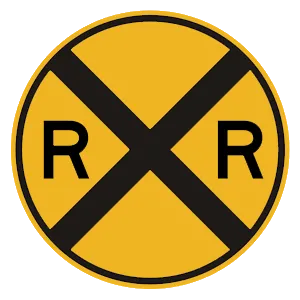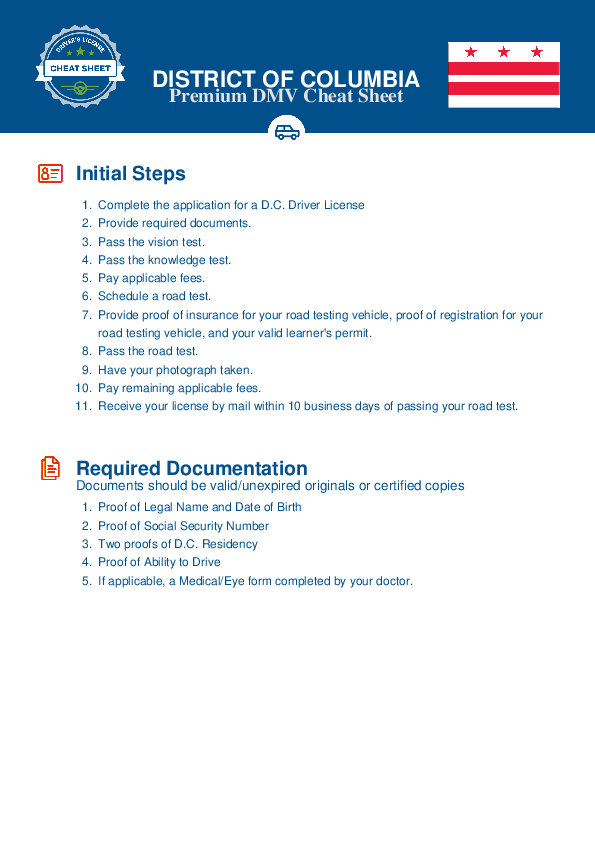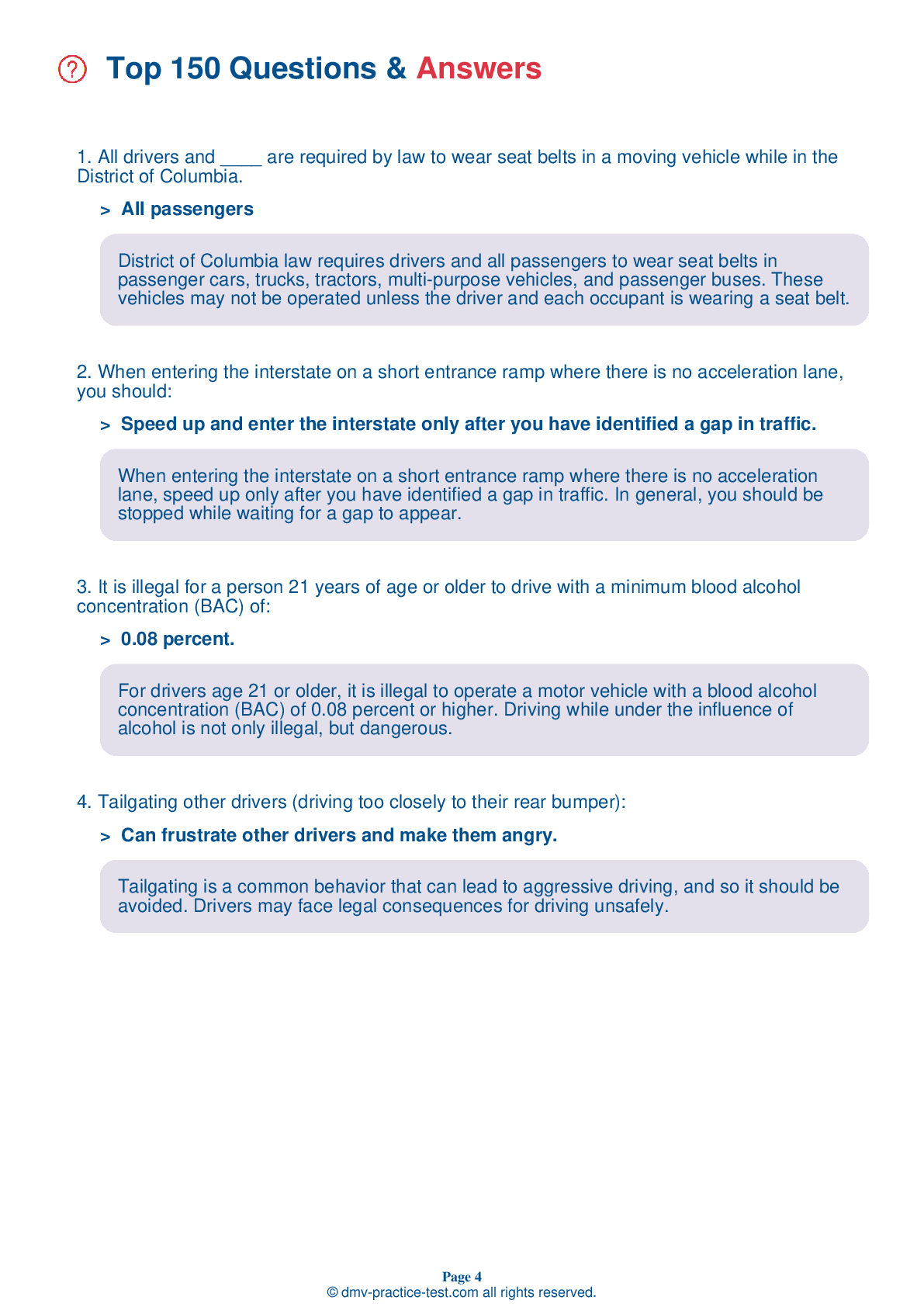FREE District Of Columbia DMV Practice Test #9 Page 2 of 3
This set of District Of Columbia DMV practise tests was been updated for January 2025. It includes questions based on the District Of Columbia Driver Handbook's most significant traffic signs and laws for 2025. Use actual questions that are very similar (often identical!) to the DMV driving permit test and driver's licence exam to study for the DMV driving permit test and driver's licence exam.
On the practise exam, each question gets a tip and explanation to help you remember the concepts. The written component of the official DMV test will include questions about traffic rules, traffic signs, and driving statutes, as well as information from the Driver Handbook.
To achieve the required passing grade, you must correctly answer 20 of the 25 questions. Take our DMV practise exam to help you prepare for your District Of Columbia instruction permit or driver's licence.
The DMV exam is available in several languages.
Using any form of testing help will result in an automatic fail, and the DMV may take further action against your driver's licence, so avoid it.
9 . Before changing lanes or attempting to pass another vehicle, you should:
Every time you want to change lanes or otherwise move your vehicle to the right or left, signal to alert other drivers to your intentions. Always check your mirrors and turn your head to check your blind spot before attempting any lateral move.
10 . What should you do if your vehicle’s right wheels leave the pavement?
If your vehicle’s right wheels leave the pavement, don't panic. Take your foot off the accelerator and steer parallel to the road. Slow down and ease back onto the roadway by keeping both hands on the steering wheel and steering into the road’s right lane with a small turn of the steering wheel. Check for traffic around you before steering back onto the pavement.
11 . An arrow painted on the pavement means:
An arrow painted on the pavement within a traffic lane indicates that drivers in the lane must make the movement indicated by the arrow. Drivers should follow directions given by any traffic signs or signals before proceeding in the direction indicated by the arrow.
12 . An octagonal sign is always a:
Octagonal signs are always stop signs. Come to a complete stop when approaching a red, eight-sided sign.
13 . To check your blind spot before changing lanes:
To check your blind spot before changing lanes, you should look over your shoulder in the direction that you plan to move.
14 . This sign is a warning that you are approaching:

A round sign means you are approaching a railroad crossing. This sign is posted a few hundred feet in front of the tracks and tells drivers to slow down, look, listen, and prepare to stop.
15 . You must stop for a school bus:
You must stop when approaching a school bus that is displaying flashing red lights while stopped to pick up or drop off children. On a two-lane road, traffic moving in both directions must stop and remain stopped as long as the red lights near the top of the bus are flashing and/or the stop arm on the left side of the bus is extended.
16 . You are entering a freeway. Check traffic on the freeway by:
When entering any roadway, you must be aware of traffic conditions. Use your side mirror and look over your shoulder to help you see and anticipate traffic when entering a freeway.
Need Car Insurance? No problem!
Compare the best rates in District Of Columbia and find a personalized policy that meets your needs.
1. Are You Currently insured ?
2. Married ?
3. Do you own your Home?
4. Do you have more than 1 car ?
5. Have you or a Family Member Honorably Served in U.S. Military ?
6. Your Name
7. Age
8. Zip code
IMPORTANT REMINDER:Auto Insurance is Mandatory to drive in District Of Columbia. Get covered before you hit the road to avoid any fines.
Ranked by best match



